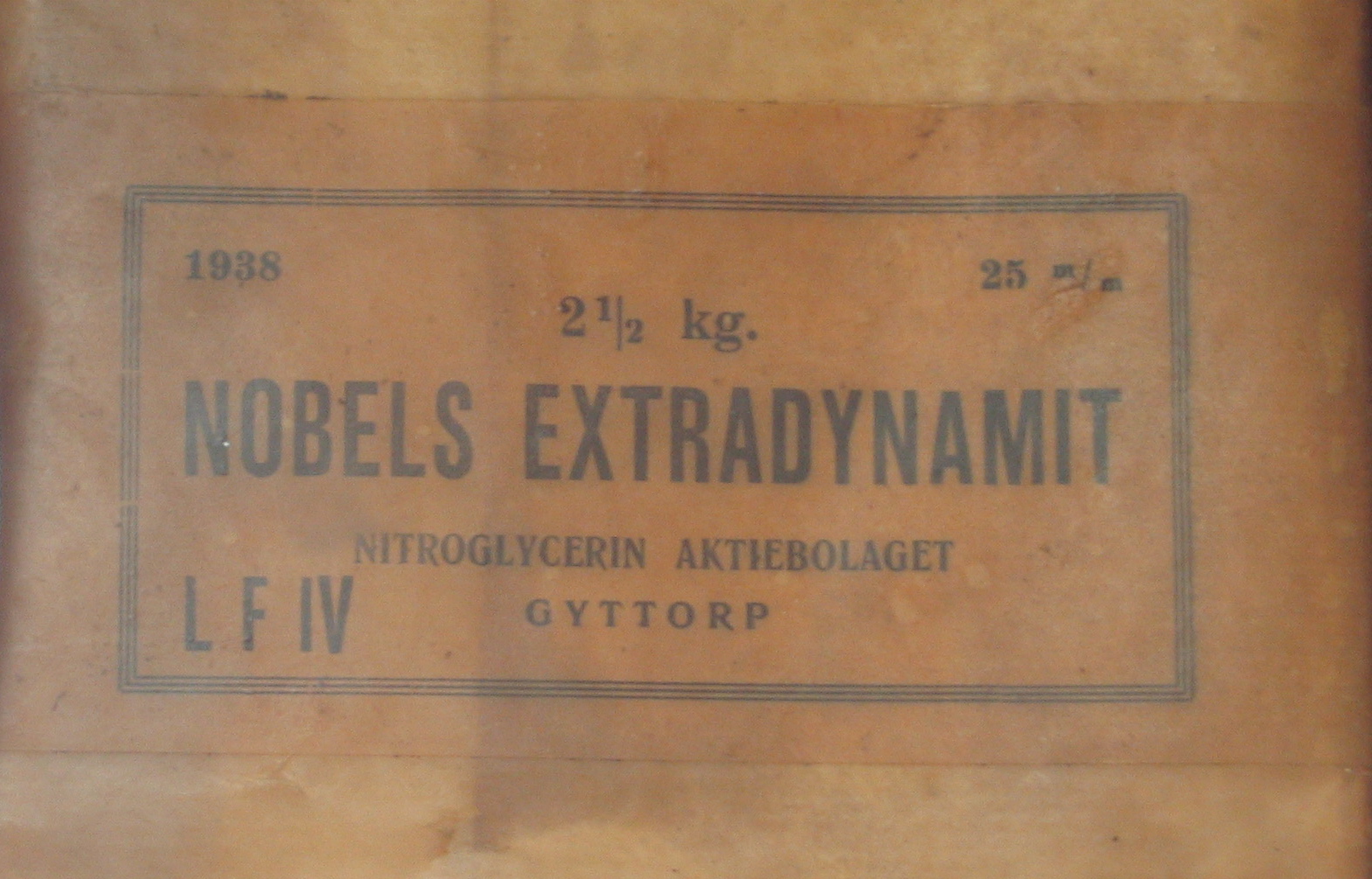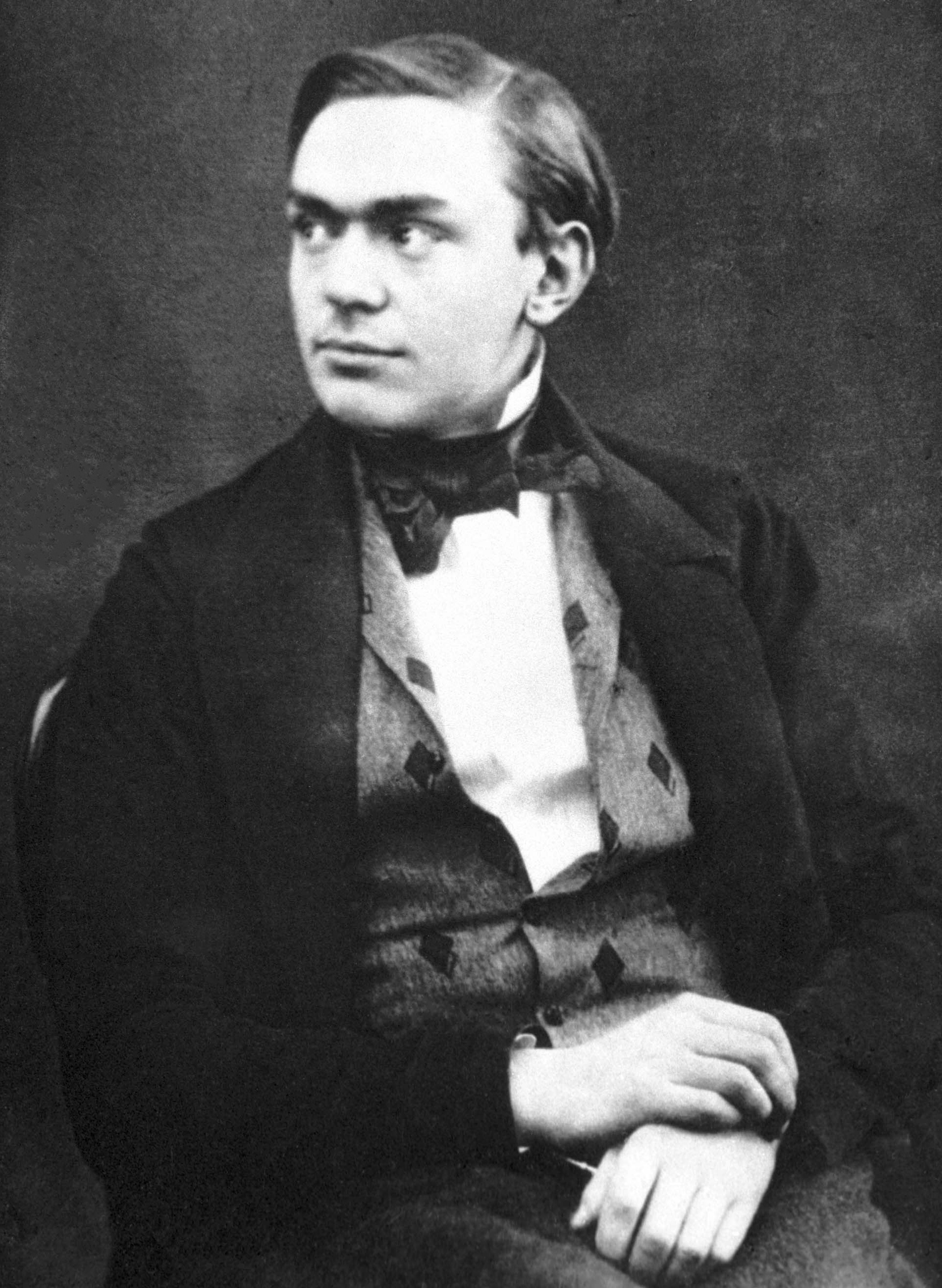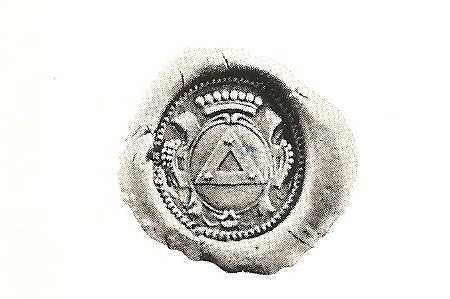|
Dynamite
Dynamite is an explosive made of nitroglycerin, sorbents (such as powdered shells or clay), and Stabilizer (chemistry), stabilizers. It was invented by the Swedish people, Swedish chemist and engineer Alfred Nobel in Geesthacht, Northern Germany, and was patented in 1867. It rapidly gained wide-scale use as a more robust alternative to the traditional gun powder, black powder explosives. It allows the use of nitroglycerine's favorable explosive properties while greatly reducing its risk of accidental detonation. History Dynamite was invented by Swedish chemist Alfred Nobel in 1866 and was the first safely manageable explosive stronger than black powder. Alfred Nobel's father, Immanuel Nobel, was an industrialist, engineer, and inventor. He built bridges and buildings in Stockholm and founded Sweden's first rubber factory. His construction work inspired him to research new methods of blasting rock that were more effective than black powder. After some bad business deals in S ... [...More Info...] [...Related Items...] OR: [Wikipedia] [Google] [Baidu] |
Dynamite Diagram
Dynamite is an explosive made of nitroglycerin, sorbents (such as powdered shells or clay), and stabilizers. It was invented by the Swedish chemist and engineer Alfred Nobel in Geesthacht, Northern Germany, and was patented in 1867. It rapidly gained wide-scale use as a more robust alternative to the traditional black powder explosives. It allows the use of nitroglycerine's favorable explosive properties while greatly reducing its risk of accidental detonation. History Dynamite was invented by Swedish chemist Alfred Nobel in 1866 and was the first safely manageable explosive stronger than black powder. Alfred Nobel's father, Immanuel Nobel, was an industrialist, engineer, and inventor. He built bridges and buildings in Stockholm and founded Sweden's first rubber factory. His construction work inspired him to research new methods of blasting rock that were more effective than black powder. After some bad business deals in Sweden, in 1838 Immanuel moved his family to Sa ... [...More Info...] [...Related Items...] OR: [Wikipedia] [Google] [Baidu] |
Alfred Nobel
Alfred Bernhard Nobel ( ; ; 21 October 1833 – 10 December 1896) was a Swedish chemist, inventor, engineer, and businessman. He is known for inventing dynamite, as well as having bequeathed his fortune to establish the Nobel Prizes. He also made several other important contributions to science, holding 355 patents during his life. Born into the prominent Nobel family in Stockholm, Nobel displayed an early aptitude for science and learning, particularly in chemistry and languages; he became fluent in six languages and filed his first patent at the age of 24. He embarked on many business ventures with his family, most notably owning the company Bofors, which was an iron and steel producer that he had developed into a major manufacturer of cannons and other armaments. Nobel's most famous invention, dynamite, was an explosive made using nitroglycerin, which was patented in 1867. He further invented gelignite in 1875 and ballistite in 1887. Upon his death, Nobel donated his fortun ... [...More Info...] [...Related Items...] OR: [Wikipedia] [Google] [Baidu] |
Nitroglycerin
Nitroglycerin (NG) (alternative spelling nitroglycerine), also known as trinitroglycerol (TNG), nitro, glyceryl trinitrate (GTN), or 1,2,3-trinitroxypropane, is a dense, colorless or pale yellow, oily, explosive liquid most commonly produced by nitrating glycerol with white fuming nitric acid under conditions appropriate to the formation of the nitric acid ester. Chemically, the substance is a nitrate ester rather than a nitro compound, but the traditional name is retained. Discovered in 1846 by Ascanio Sobrero, nitroglycerin has been used as an active ingredient in the manufacture of explosives, namely dynamite, and as such it is employed in the construction, demolition, and mining industries. It is combined with nitrocellulose to form double-based smokeless powder, used as a propellant in artillery and firearms since the 1880s. As is the case for many other explosives, nitroglycerin becomes more and more prone to exploding (i.e. spontaneous decomposition) as the temper ... [...More Info...] [...Related Items...] OR: [Wikipedia] [Google] [Baidu] |
Explosive
An explosive (or explosive material) is a reactive substance that contains a great amount of potential energy that can produce an explosion if released suddenly, usually accompanied by the production of light, heat, sound, and pressure. An explosive charge is a measured quantity of explosive material, which may either be composed solely of one ingredient or be a mixture containing at least two substances. The potential energy stored in an explosive material may, for example, be: * chemical energy, such as nitroglycerin or grain dust * pressurized gas, such as a gas cylinder, aerosol can, or boiling liquid expanding vapor explosion * nuclear energy, such as in the fissile isotopes uranium-235 and plutonium-239 Explosive materials may be categorized by the speed at which they expand. Materials that detonate (the front of the chemical reaction moves faster through the material than the speed of sound) are said to be "high explosives" and materials that deflagrate ar ... [...More Info...] [...Related Items...] OR: [Wikipedia] [Google] [Baidu] |
Nobel Family
The Nobel family ( ), is a prominent Swedish family closely related to the history both of Sweden and of Russia in the 19th and 20th centuries. Its legacy includes its outstanding contributions to philanthropy and to the development of the armament industry and the oil industry. Some of its foremost members are Immanuel Nobel the Younger, the engineer, developer of underwater naval mines and inventor of the rotary lathe used to produce plywood, Ludvig Nobel, the founder of Branobel and one of the richest and the most important men in Russia at his time, and Alfred Nobel, the inventor of dynamite who left the major part of his estate to the creation of the Nobel Prizes. Origins The Nobel family originated from the Scanian village of Östra Nöbbelöv, hence their surname. The first member was Petrus Olai Nobelius (1655–1707) who married Wendela Rudbeck (1668–1710), sister of Olof Rudbeck the Younger, daughter of the famous Swedish scientist Olaus Rudbeck the Elder a ... [...More Info...] [...Related Items...] OR: [Wikipedia] [Google] [Baidu] |
Explosion
An explosion is a rapid expansion in volume of a given amount of matter associated with an extreme outward release of energy, usually with the generation of high temperatures and release of high-pressure gases. Explosions may also be generated by a slower expansion that would normally not be forceful, but is not allowed to expand, so that when whatever is containing the expansion is broken by the pressure that builds as the matter inside tries to expand, the matter expands forcefully. An example of this is a Volcano, volcanic eruption created by the expansion of magma in a magma chamber as it rises to the surface. Supersonic explosions created by high explosives are known as detonations and travel through shock waves. wikt:subsonic, Subsonic explosions are created by low explosives through a slower combustion process known as deflagration. Causes For an explosion to occur, there must be a rapid, forceful expansion of matter. There are numerous ways this can happen, both natura ... [...More Info...] [...Related Items...] OR: [Wikipedia] [Google] [Baidu] |
Detonator
A detonator is a device used to make an explosive or explosive device explode. Detonators come in a variety of types, depending on how they are initiated (chemically, mechanically, or electrically) and details of their inner working, which often involve several stages. Types of detonators include non-electric and electric. Non-electric detonators are typically stab or pyrotechnic while electric are typically "hot wire" (low voltage), exploding bridge wire (high voltage) or explosive foil (very high voltage). The original electric detonators invented in 1875 independently by Julius Smith and Perry Gardiner used mercury fulminate as the primary explosive. Around the turn of the century performance was enhanced in the Smith-Gardiner blasting cap by the addition of 10-20% potassium chlorate. This compound was superseded by others: lead azide, lead styphnate, some aluminium, or other materials such as DDNP ( diazo dinitro phenol) to reduce the amount of lead emitted into the atm ... [...More Info...] [...Related Items...] OR: [Wikipedia] [Google] [Baidu] |
Geesthacht
Geesthacht () is the largest city in the Lauenburg (district), District of the Duchy of Lauenburg (Herzogtum Lauenburg) in Schleswig-Holstein in Northern Germany, south-east of Hamburg on the right bank of the Elbe, River Elbe. History A church was built in what is today Geesthacht around the year 800. The town was first mentioned in 1216 as ''Hachede'', then a part of the Duchy of Saxony. A change in the course of the Elbe cut the settlement into two: Geest''hacht'' and Marschacht (in today's Lower Saxony). In 1296, Geesthacht became part of the Duchy of Saxe-Lauenburg, partitioned from Saxony. Duke Eric III of Saxe-Lauenburg, Eric III pawned Geesthacht - as part of the Herrschaft (territory), Herrschaft of Bergedorf - to the Free City of Lübeck in 1370. In 1401, Duke Eric IV of Saxe-Lauenburg, Eric IV retook the pawned area by force. Geesthacht was ceded as part of a condominium to the Hanseatic cities Hamburg and Lübeck by the Peace of Perleberg in 1420. In 1811, Geesthacht ... [...More Info...] [...Related Items...] OR: [Wikipedia] [Google] [Baidu] |
Nobels Extradynamit Label
The Nobel Prizes ( ; ; ) are awards administered by the Nobel Foundation and granted in accordance with the principle of "for the greatest benefit to humankind". The prizes were first awarded in 1901, marking the fifth anniversary of Alfred Nobel's death. The original Nobel Prizes covered five fields: physics, chemistry, physiology or medicine, literature, and peace, specified in Nobel's will. A sixth prize, the Prize in Economic Sciences, was established in 1968 by Sveriges Riksbank (Sweden's central bank) in memory of Alfred Nobel. The Nobel Prizes are widely regarded as the most prestigious awards available in their respective fields. Shalev, p. 8. Except in extraordinary circumstances, such as war, all six prizes are given annually. Each recipient, known as a laureate, receives a green gold medal plated with 24 karat gold, a diploma, and a monetary award. As of 2023, the Nobel Prize monetary award is , equivalent to approximately . The medal shows Nobel in profile with ... [...More Info...] [...Related Items...] OR: [Wikipedia] [Google] [Baidu] |
Black Powder
Gunpowder, also commonly known as black powder to distinguish it from modern smokeless powder, is the earliest known chemical explosive. It consists of a mixture of sulfur, charcoal (which is mostly carbon), and potassium nitrate, potassium nitrate (saltpeter). The sulfur and charcoal act as fuels while the saltpeter is an oxidizer. Gunpowder has been widely used as a propellant in firearms, artillery, rocketry, and pyrotechnics, including use as a blasting agent for explosives in quarrying, mining, building Pipeline transport, pipelines, tunnels, and road#Construction, roads. Gunpowder is classified as a Explosive#Low, low explosive because of its relatively slow decomposition rate, low ignition temperature and consequently low brisance, brisance (breaking/shattering). Low explosives deflagration, deflagrate (i.e., burn at subsonic speeds), whereas high explosives detonation, detonate, producing a supersonic shockwave. Ignition of gunpowder packed behind a projectile generates ... [...More Info...] [...Related Items...] OR: [Wikipedia] [Google] [Baidu] |
Théophile-Jules Pelouze
Théophile-Jules Pelouze (also known as Jules Pelouze), ; 26 February 180731 May 1867) was a French chemist. Life He was born at Valognes, and died in Paris. His father, Edmond Pelouze, was an industrial chemist and the author of several technical handbooks. The son, after spending some time in a pharmacy at La Fère acted as laboratory assistant to Gay-Lussac and Jean Louis Lassaigne at Paris from 1827 to 1829. In 1830 he was appointed associate professor of chemistry at Lille, but returning to Paris next year became ''repetiteur'', and subsequently professor at the École polytechnique. He also held the chair of chemistry at the Collège de France, and in 1833 became assayer to the mint and in 1848 president of the ''Commission des Monnaies''. After the coup d'état in 1851 he resigned his appointments, but continued to conduct an experimental laboratory-school he had started in 1846. There he worked with the explosive material guncotton and other nitrosulphates. His ... [...More Info...] [...Related Items...] OR: [Wikipedia] [Google] [Baidu] |








